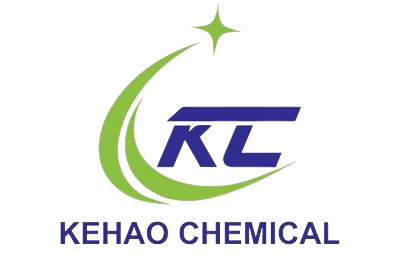A bad HPMC supplier doesn’t just waste your time—it can collapse your entire supply chain. If your project gets delayed, your business takes the hit.
To avoid risky partnerships, watch for these key warning signs in an HPMC factory: poor transparency, outdated equipment, no certification, low-quality samples, or inconsistent communication. These issues can directly damage your reputation and delivery timelines.
Choosing an HPMC factory isn’t about getting the cheapest quote. It’s about protecting your business. I’ve seen clients lose major contracts because their supplier cut corners. Here’s how to spot those red flags early—and what to do about them.
Why Choosing the Wrong HPMC Factory Can Damage Your Supply Chain?
If you trust the wrong HPMC supplier, you risk much more than just a delayed shipment. You risk unreliable quality, weak bonding strength, and the worst—losing trust with your downstream clients.
The wrong factory might skip quality checks or swap materials, leading to product failure at the job site. These failures cost time, money, and reputation—especially in large construction projects where timelines and performance are non-negotiable.
I still remember one client—a large contractor in Southeast Asia—who tried to save on cost by choosing a cheaper supplier. The result? Their tile adhesive failed, workers had to redo the job, and their project got delayed by two weeks. After that, they came back to us and stayed. That’s why I always say: never gamble on quality.
The Real Cost of Choosing Wrong
Here’s a quick breakdown of how a bad factory hurts your supply chain:
| Risk Factor | What Happens | Long-Term Impact |
|---|---|---|
| Poor product consistency | Final mixes vary from batch to batch | Site failures, weak bonding |
| Shipment delays | Missed project schedules | Loss of client trust |
| No certifications | Can’t meet regulatory or client specs | Disqualified from bids |
| Bad communication | Misunderstandings, slow responses | Bottlenecks in procurement and logistics |
| Low R&D capability | No formula optimization or application support | No tech backup when problems happen |
Your supply chain depends on a stable, transparent, and qualified partner. That’s why vetting upfront is critical—not optional.
5 Common Red Flags to Watch Out for in an HPMC Factory?
You might not notice at first, but there are clear signs that tell you: this supplier is not trustworthy.
Red flags like vague answers, no factory visit options, or inconsistent testing data usually point to poor internal systems. If you spot even one, don’t ignore it. Ask hard questions or walk away.
Let me break down the top 5 red flags I’ve seen over the years:
1. No Factory Visit Allowed
If a supplier refuses a factory visit—whether online or in person—it usually means they have something to hide. A good factory welcomes transparency. I’ve hosted dozens of buyers on video tours and in-person visits. It builds trust instantly.
2. Vague Test Reports or No ISO/REACH Certification
Real manufacturers should provide up-to-date lab data—viscosity, moisture, ash content—all with clear reference conditions. If their COA is handwritten or lacks a testing date, walk away. Lack of certification is also a no-go.
3. Old Equipment and Manual Packaging
Modern production needs automation. If they still pack bags by hand or dry powder under the sun, that’s a sign they’re cutting costs where it matters most. That leads to unstable quality batch to batch.
4. Inconsistent Communication
This one’s subtle but deadly. If the sales rep changes every month, or takes three days to respond, your business is not their priority. Poor internal systems usually reflect bigger issues in the factory’s operations.
5. No Technical Support
Your clients might need help with application, formula adjustments, or troubleshooting. If the factory can’t support beyond sales, it’s a sign they’re just a trading company or lack technical depth.
How to Vet an HPMC Factory Before Placing a Bulk Order?
Don’t wait until a shipment fails. You can—and should—verify a factory before your first order.
Start by checking their certifications and testing procedures, then ask for product samples and visit the factory. Evaluate their communication, equipment, and technical know-how. Trust is built through facts, not promises.
Here’s the vetting checklist I personally use—and you can too:
Step-by-Step Vetting Guide
| Step | What to Look For | Tips from My Experience |
|---|---|---|
| 1. Certifications | ISO, REACH, COA with full test data | Always check testing date and lab name |
| 2. Sample Testing | Consistency, solubility, viscosity | Test under jobsite conditions |
| 3. Factory Visit (virtual) | Clean workshop, automated lines, packaging area | Look for stainless steel reactors |
| 4. Communication | Fast replies, clear answers, one contact person | Avoid teams that shuffle sales reps |
| 5. Tech Support | Engineers available? Application help? | Ask scenario questions—they should know |
| 6. Previous Client List | Do they supply big names or only small traders? | Bigger names mean stronger capabilities |
Once, a potential client asked to see our testing area during a video call. We showed them everything—viscosity meters, powder lab, and even a live packaging line. That client placed a 20-ton order within a week. When you’re transparent, trust follows fast.
Conclusion
Spotting red flags early saves time, money, and your reputation. Choose your HPMC partner with care—because the cost of fixing a bad decision is always higher than doing it right the first time.



